Face value for a 2017 FoBAB ticket is 30% higher than last year’s festival.
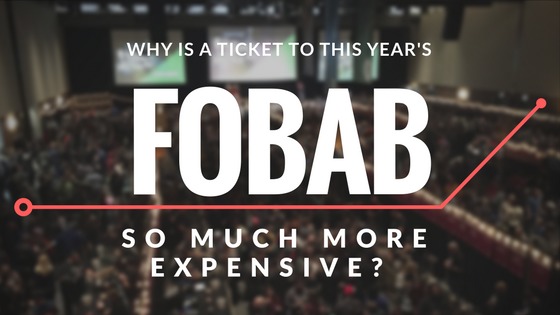
Face value on this year’s ticket is $85 — a 30% jump from last year’s $65 ticket price. The number of sessions are the same, the number of tickets being sold is the same, the number of breweries in attendance isn’t yet set but should roughly be the same. So what accounts for such a jump?
We spoke with ICBG Executive Director Danielle D’Alessandro and Guild President Kevin Cary of Begyle to find out more about the jump. Unsurprisingly, there’s a few factors at play.
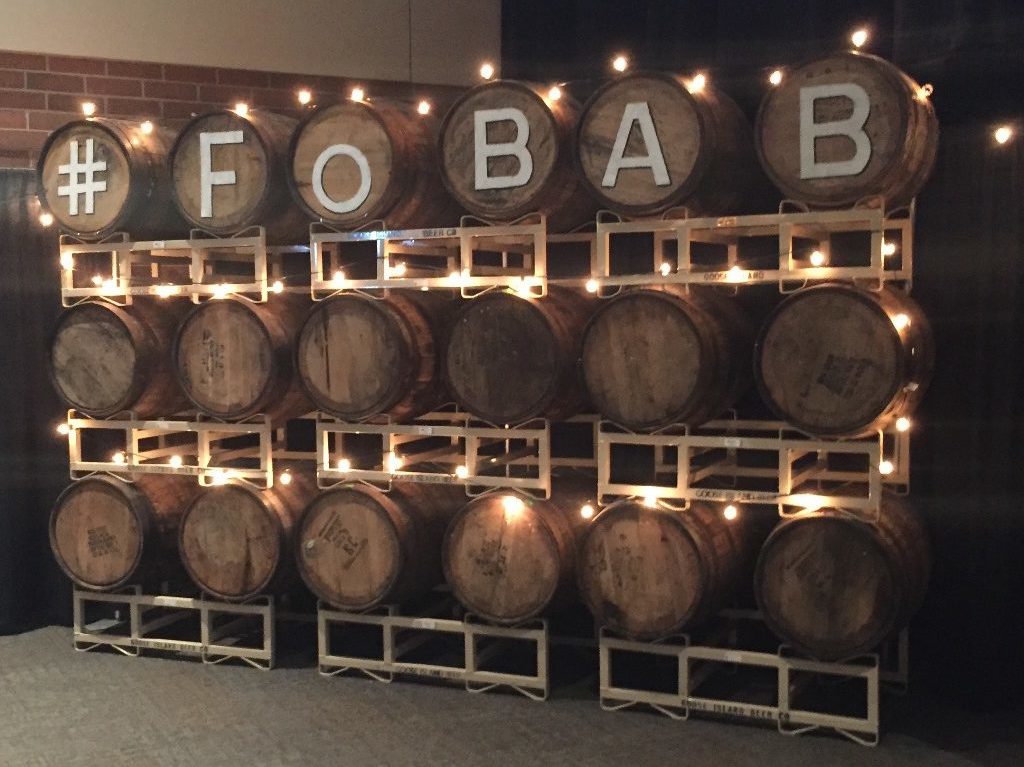 For starters, the direct comparison between last year’s ticket and this year’s isn’t exactly apples to apples.
For starters, the direct comparison between last year’s ticket and this year’s isn’t exactly apples to apples.
Last year’s $65 ticket didn’t include credit card fees, a venue fee for UIC and a ticketing vendor fee. Those additional costs were tacked on after the initial face value. This year, those two fees are reportedly rolled into this year’s ticket — so the 2017 price of $85 will only have a 3% credit card fee attached (which by our math is an additional $2.55).
This creative accounting may help soften some of the blow for ticket buyers, knowing that the pricing after all the fees will be much closer to the actual face value.
Check out the rest of our FOBAB coverage through the years
Additionally, due to some sponsorship changes in 2016, there was a much larger operational cost in getting the beer back to breweries that wasn’t poured — which is something that didn’t even happen in prior FoBAB events.
In previous years, Cary says, all that high-grade barrel-aged premium beer would be dumped after the event — and the empty kegs sent back to brewers. Without the sponsorship of KegCraft (who handled keg logistics), the guild now houses those sixtels after the event and helps get them — and the beer inside — back to the breweries that provided them.
As Cary explains it, “Last year was the first year that brewers were able to actually recoup any beer that they didn’t pour at the event…We house all the FoBAB kegs left over, which is about 1,200 sixtels. We shipped all of them to Lincolnwood, our [Begyle] expansion space. And we stored those there and then basically shipped them back to the brewers that still had a decent amount of beer left.”
Do many breweries pour all the beer they send to FoBAB? Sure — some kegs kick within minutes of opening the doors. But there are also breweries that send beer that may get…overlooked, shall we say.
“[Some breweries] send three [beers] and they maybe only tap one keg and there’s maybe only a gallon gone from each keg. So you have this wide range of consumption,” Cary says. “And so that’s pretty taxing as well. Because now you have to ship those kegs back to that brewery, if they shipped them in their own kegs. So that expense is sort of a new one.”
And, of course, we all want less wasted premium beer, right?
“[ICBG Associate Director] Katie [Long] and Danielle spent a considerable amount of time managing that. So you think about just the sheer amount of manpower that goes into making this thing work, and for us to do it as a well oiled machine, it was sorta like, we need to rethink and reposition this for the future. How do we make sure that FOBAB stays a viable event?”
And in case you’re wondering about the floor plan, yes, there should be some more room to move this year. D’Alessandro and her team have definitely discussed layout, crowd flow and more — for example, this year’s FoBAB will have the concession area moved to near the coat check which will free up floor space in the event room. The near-endless line for Goose Island offerings will be adjusted to help make for a better map as well.
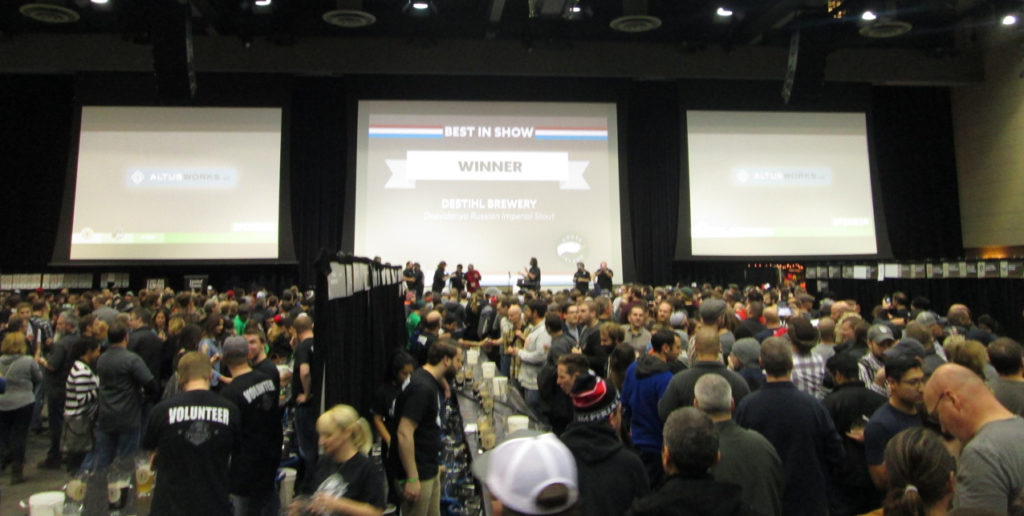
Independent of the creative accounting and the manpower required to put on an event of this scale, one of the main reasons for this year’s rise in price is a move to bring FoBAB’s 15th Anniversary pricing into parity with other events that have a national footprint.
“After having a conversation with our board of directors [and] talking with our committees that help to plan for this festival, we determined that based on the uniqueness of this festival that we should be more reflective of what other festivals are doing in terms of pricing,” D’Alessandro said. “So like [the] Firestone Walker invitational – that’s an $85 ticket. GABF is an $85 ticket. And based on the rarity of the beers you get to sample for the time period and the number of samples you get, we thought that $85 was more in line with the experience.”
“We want this to be the best wood- and barrel-aged festival in the country,” Cary adds. “This is the 15th year of FoBAB. How do we position this festival to stand out — there’s other wood and barrel aged festivals coming on line that could be direct competition. You have the BeerAdvocate [Beer Meets Wood] event out in Maine, you have the [Rare and Wild Beer Festival] at the Field museum now in October … we’re trying to sort of reposition it and make sure the foundation is strong for the future.”
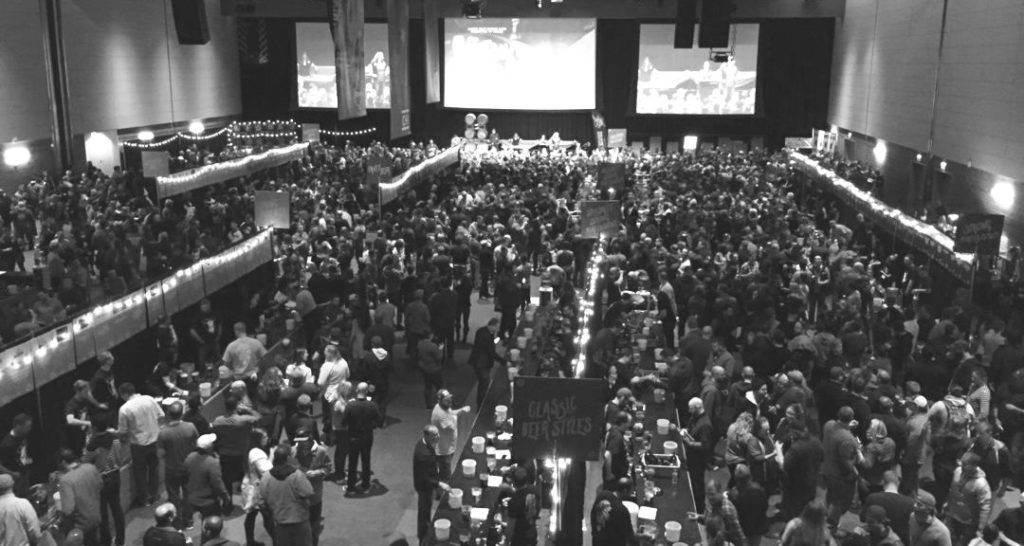
One thing to remember is that this event (like other Guild-hosted festivals including Beer Under Glass) is at heart a fundraiser — and FoBAB is the largest of the year. Funds from the event “help us support the work that we do on behalf of our small craft brewers and our small businesses throughout the state,” D’Alessandro says. “Which goes back into advocacy, which goes back into promotion of our brewers, which goes back into educational opportunities, to allow our brewers to continue to make the best beer possible.”
So…what does that mean? Well, one direct benefit of FoBAB cash helps get brewers in front of those legislators, for starters.
“It definitely provides an opportunity for us to host our lobby days in Springfield,” D’Alessandro says when asked about what FoBAB helps fund.”We understand the time commitment and the financial restraints that some of our small brewers have. That provides us an opportunity to pay for lodging for a night in Springfield for our brewers to come down.”
“We spent a day at the Capitol. We interact with their local state senators and state reps. We’ve had meetings with the Governor’s office. With the Senate president. With the Speaker of the House. With Republican leaders. And so that’s an opportunity [for] small businesses in these districts to interact with their legislators and talk about the importance that they’re having in their community. The jobs that they’re providing. The charity events that they’re doing, etc. So certainly when it comes to the advocacy piece, that’s critical where our dollars come into play,” says D’Alessandro.
According to Guild AD Katie Long, they expect to keep the number of tickets sold the same as last year — approximately 1700-1900 tickets sold per session — meaning that $20 increase roughly equates to an increase of gross revenues by $102,000 to $114,000. The most recent Guidestar.org documents detailing Guild financials (from 2015) report that FoBAB brought in $342, 516 that year.
Raising an additional $100K would represent about 30% gross increase to fund Guild efforts. And as it’s a nonprofit, every dollar you pay goes to the ICBG to support their mission, which is “dedicated to promoting the development and expansion of the craft beer industry in Illinois” through legislation, education and promotion of their member breweries.
“In an age where we are inundated with festivals, the consumer doesn’t necessarily know when that’s a for-profit festival, or a not-for-profit, or a local Chamber event, or a neighborhood association event, and I totally get that,” D’Alessandro says. “FoBAB is entirely run by the staff of the ICBG and by volunteers and contractors. So we work incredibly hard to make this a really unique and enjoyable festival. But all of the money that we raise does go to support the work that we do on behalf of Illinois craft brewers. And we’re really proud of that.”
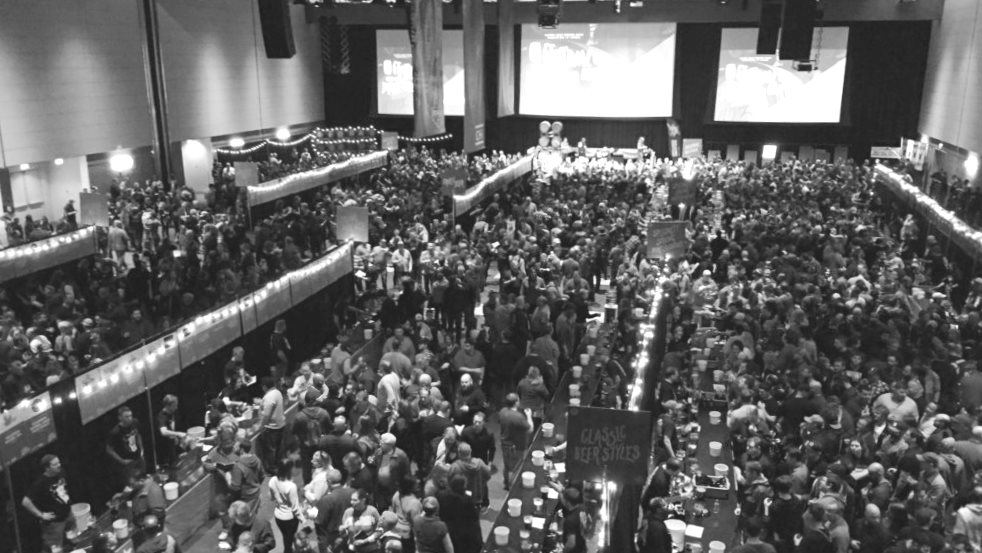
One final reason, according to Cary, for this year’s dramatic price jump are the hopes that this will be the last price increase for a while.
“Part of that was sort of ripping the band-aid of the price and putting it in line with some of the major festivals out there,” he said. “We thought it was a good time to reset everything and sort of move forward into next year — so the idea is that instead of taking a $10 increase this year and another $10 next year, it ended up being a $20 increase.”
“My position on that is, yeah, take that hit this year and then we move on. There might be some people who were turned away and definitely you know, that wasn’t the intent. But, I think it’s better to have one price increase than to do multiple over a couple years. Our goal isn’t to alienate our enthusiasts. Because that’s a huge part of why we’re in existence.”
In recent weeks, we’ve asked readers of our weekly email to sound off. Almost without exception, those who were compelled to write us expressed — at minimum — strong hesitation about this year’s ticket purchase, if not outright walking away. Most responses indicated that in a world where there are many, many beer festivals over the course of the year, a ticket to FOBAB doesn’t quite have the same draw that it used to.
Some excerpts:
“Although many of my beer friends will go, I am at a point where the cost outweighs the benefits. FOBAB is now as expensive as GABF, but not nearly the same experience in my opinion. Both are competitions with breweries from all over the country but, not much has been added to the FOBAB participant experience since to justify such a jump in price.”
“I’ve gone to FOBAB the last 3 or 4 years but I’m not [attending] this year. I always renew my Imbibe membership and get the extra hour at Fobab for imbibe members only (hardly any lines and you get to try all the best beers before they kick). I couldn’t justify spending $50 to renew my imbibe membership then another $80 for Fobab…For what it’s worth I do think FOBAB is the best beer festival in Illinois in terms of beer quality.”
“Too expensive and crowded…It seems to be a trend with all festivals increasing prices. I’m personally better off seeking out bars or bottle shares than dropping so much on a festival.”
“[We] are really torn about attending FoBAB this year due to the price increase. We have attended in the past, and it was a great event, but I really wonder if it is worth $85…Each year there are more events, and we are at the point that we have to evaluate each and choose which we want to spend our time and money on. Most seem to run $50 to $60, and I think that’s probably a reasonable price. Plus when you add in events in Wisconsin, Indiana, Iowa, there’s lots of place to spend your beer bucks.”
“I’ve been going to FoBAB for five years now as an Imbibe member with the early entry and I have to say, with this year’s price increase, it will be my last year. I’ve been very picky about the increasing amount of beer festivals largely due to the rising costs over the last 5-7 years and FoBAB was the last holdout. While I realize that being an Imbibe member adds a little to the cost and no one is making me do that, it was way more affordable in the past, and this is the way that I prefer to attend the fest.”
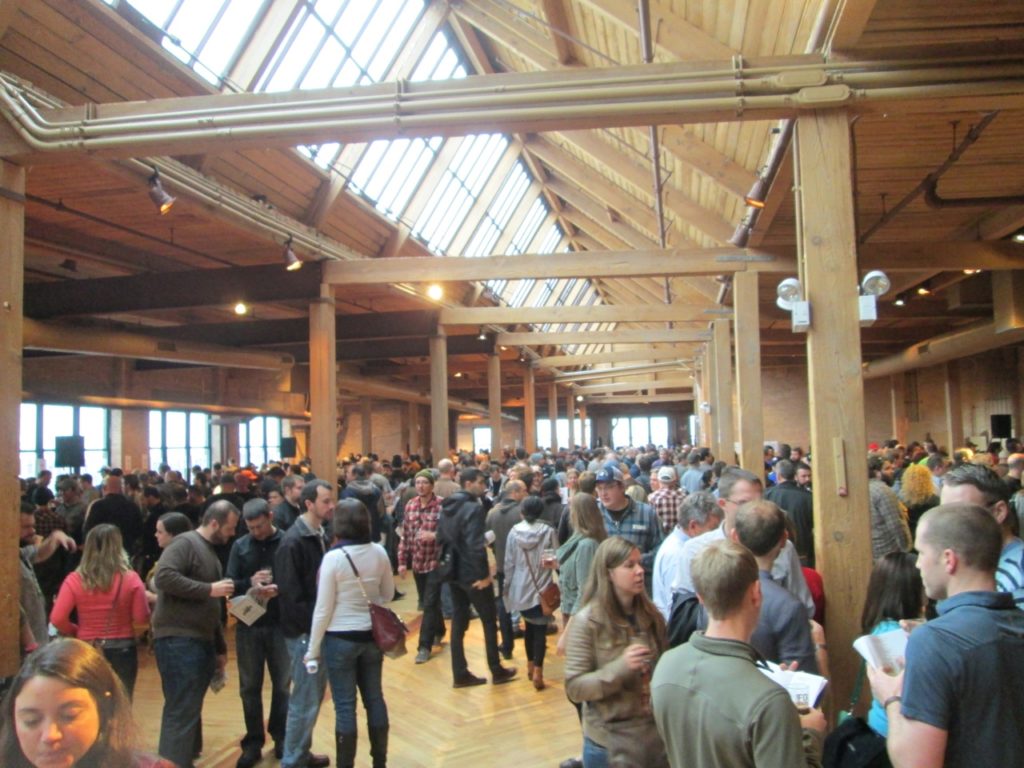
Speaking personally, based on the availability and array of rare, hard to find beers, FoBAB remains one of the best beer events I’ve attended (though we do miss the charm of the Bridgeport Arts Center, pictured above).
When you consider the price of a bottle or can of barrel-aged beer on the current market (retail or black market), combined with the chance to sample a wide variety of hefty stouts, wild ales, unique experimental options and an increasing number of ciders and meads, it all still makes it worth the trip to the city’s near South Side.
And $85 only takes you so far when you’re out to do it yourself — for example, that’s roughly 8-10 pours of a barrel-aged beer at a decent beer bar. That’s about eight bottles of Goose Island Bourbon County Stout. Three four-packs of Revolution’s new canned barrel-aged options — all before tax.
I’d personally rather have a couple dozen tastes of some far-flung stuff that is nearly impossible to get your hands on. Hell, I’d say last year’s one sample of Jester King’s SPON was well worth half the entry fee.
That said, in the interest of full disclosure, it is very easy for me to say there’s a great value for FoBAB — because for most of our time attending, we receive the benefit of media passes and early access and other things that go along with being a somewhat established beer writer in Chicago. And I fully acknowledge that $85 for a 2017 FoBAB ticket is still a good chunk of change.
Still, if you go to one festival a year…this is still a mighty good one to choose.
What about you? If you’ve attended in the past, do you plan to attend this year? Or does a $20 increase make it no longer worth the trip to the UIC Forum? Sound off:
Don’t forget to review all of our previous FoBAB coverage from previous years here.